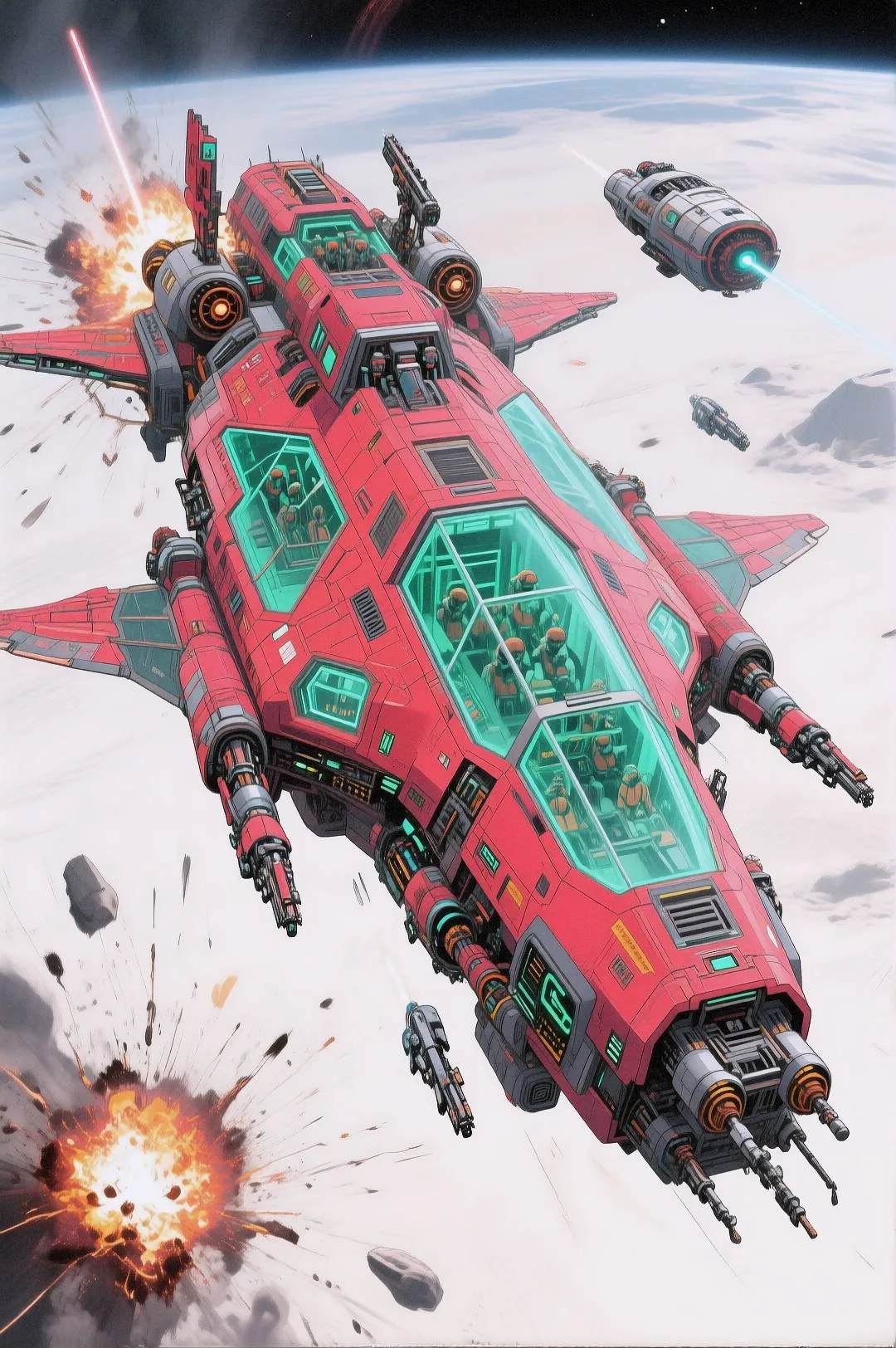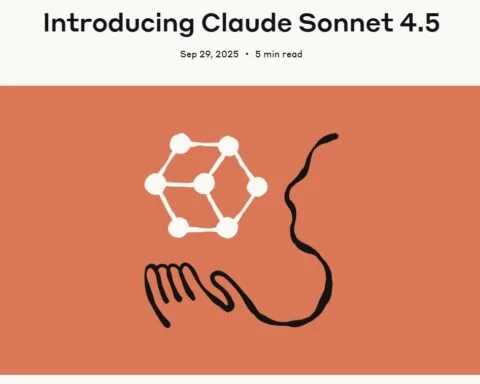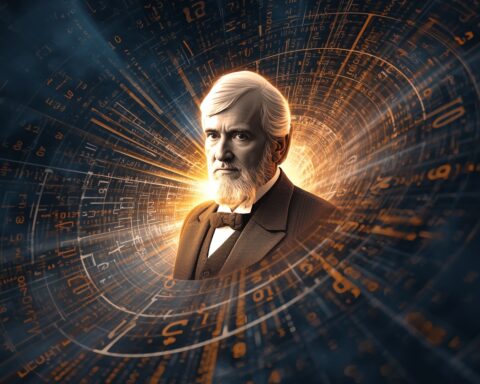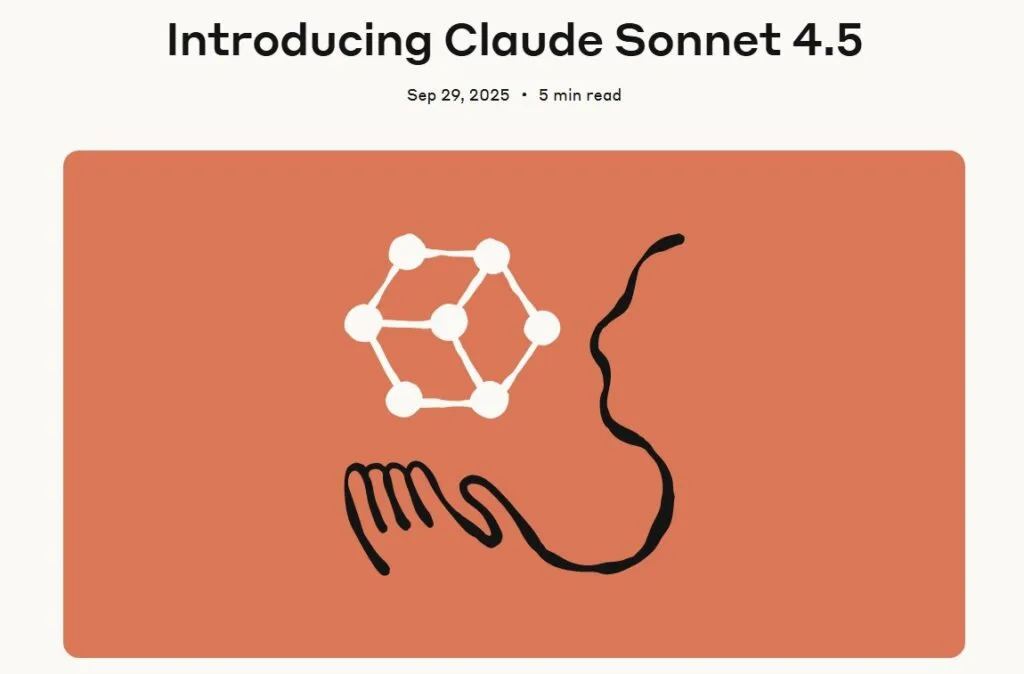Last Updated on September 23, 2025 12:57 pm by Laszlo Szabo / NowadAIs | Published on September 23, 2025 by Laszlo Szabo / NowadAIs
Qwen Image Edit: The AI That Can Swap Objects, Rewrite Posters, and Fix Faces – Key Notes Section
Qwen Image Edit allows dual editing modes: semantic (object rotation, style changes) and appearance (fine element edits) to let users choose how much of the original image to preserve.
It offers strong bilingual text-editing (Chinese + English) that preserves font, style, and size when adding/modifying text inside images.
The 2509 version enhances consistency (faces, product identity, text style), adds support for multi-image input and condition controls (like ControlNet), making edits more stable and versatile.
What is Qwen Image Edit?
Qwen Image Edit (sometimes seen as Qwen-Image-Edit) is an image editing model developed by the Qwen / QwenLM team (Alibaba). It extends existing image generation tools by offering precise and flexible ways to modify images via text instructions. Unlike many models that only generate images from scratch, Qwen Image Edit enables you to take an existing image and tell the model how to modify it—change objects, adjust style, correct mistakes, rotate, add or remove elements, edit text in the image, etc. The underlying model is built on the 20-billion-parameter Qwen-Image foundation, linking in modules like Qwen2.5-VL for semantic understanding and a VAE encoder for appearance control. Hugging Face
Core Capabilities in Depth
Dual Editing: Semantic vs Appearance
One of the standout characteristics of Qwen Image Edit is its ability to support two major types of image edits:
Semantic editing: High-level changes that alter content or meaning. For example, rotating an object, changing its style, substituting one object with another while preserving scene coherence. The model uses visual semantic control via Qwen2.5-VL to maintain meaningful correspondence. Hugging Face
Appearance editing: Low-level modifications where you want to keep most of the image exactly the same (unchanged parts), and only tweak a portion: remove a small object, change color, modify texture, add a signboard, etc. The VAE encoder helps here to preserve fine visual appearance where required. Hugging Face
These two editing modes make Qwen Image Edit versatile: you can do large transformations or fine detail tweaks with precise control.
Precise Text Editing
Another strong point is its support for editing text embedded in images. Qwen Image Edit can:
Recognize and preserve existing text font, size, style when modifying text.
Handle bilingual text editing (Chinese and English). That is, you can add, delete, or change text inside an image, and it will try to keep consistency with original styling. Hugging Face
Correct text portions step-by-step, e.g. in artwork or calligraphy, by marking regions and asking the model to fix them. This is useful when text is intricate or you want to maintain style fidelity. Hugging Face
Benchmark and Performance
In tests and comparisons, Qwen Image Edit achieves state-of-the-art (SOTA) performance on many public image editing benchmarks. This includes metrics of fidelity (how much of the original should remain), identity preservation (especially in portraits or recognizable objects), text correctness, and alignment with prompt instructions. arXiv
Updates like Qwen-Image-Edit-2509 improve consistency (keeping things fixed that should stay fixed, like faces, product identity) and support multi-image editing (feeding more than one image as input). GitHub
Architecture, Training, and How It Works
Underlying Model Components
Qwen Image Edit builds upon:
Qwen-Image: the image generation foundation model in the Qwen family. This model itself is designed for both generating new images and editing existing ones. GitHub+1
Qwen2.5-VL: a vision-language model that helps the system understand what’s in the image, what objects are, what semantic roles they play. This is used for semantic control in editing. arXiv
VAE (Variational Autoencoder) Encoder: helps retain appearance, color, texture etc., especially in areas that are not being edited. This aids in making edits blend well and maintain visual fidelity. arXiv
Training Strategy
Qwen Image Edit is trained using a combination of tasks:
Text-to-Image (T2I) generation: generating images from textual prompts. Helps build the generation side. arXiv
Text-Image-to-Image (TI2I) tasks: where the model sees an image and text, and is asked to produce a modified image based on prompt + original. arXi
Image-to-Image reconstruction tasks: so the model learns to reconstruct images, preserving content precisely, which helps with appearance editing. arXiv
They also apply curriculum learning for text rendering: starting from simpler text, then more complex, paragraph-level text, both for alphabetic languages and logographic ones like Chinese. arXiv
Iterations: 2509 Version
The “2509” version of Qwen-Image-Edit introduces enhancements:
Better consistency in single-image inputs, such as keeping facial identity consistent under different poses, product identity, text style etc. GitHub
Multi-image editing support: feeding multiple images to combine content like “person + scene”, or “person + product”, etc. GitHub
Native support for conditions like ControlNet (depth maps, edge maps, keypoint maps) to constrain how the edit should follow certain shapes or layouts. GitHub
Use Cases: What Can You Do With Qwen Image Edit

Artistic Style Transfers & Creative Manipulation
You can feed in a portrait or photo and change its overall style: make it look like a painting (e.g. Studio Ghibli-style), apply texture, alter lighting, or change viewpoint or environment. Qwen Image Edit supports these transformations while keeping the identity or structure intact. Hugging Face
Product / Advertising Graphics Editing
For product shots or posters, you might want to change text, logos, backgrounds, or add signage. Qwen Image Edit can insert or modify product names, adjust placement, produce promotional imagery. It works well because it preserves product identity and text style. Hugging Face
Portraits, Faces, & Identity Repairs
In portraits, where keeping a person recognizable is important, Qwen Image Edit does well. If you want to change pose, expression, outfit, background, or make corrections, the semantic control ensures features like face, eyes, hair remain consistent. Also helpful in restoration tasks (e.g., old photos) and fine-correction (e.g. correcting handwritten characters). Hugging Face
Text Changes in Graphic Media
For graphic design, signage, posters, product labels, or printed artworks, Qwen Image Edit lets you change text content, style, font, color, and even layout in the image. For example, Chinese posters or English ones where both text and image need editing. The model retains existing text style to the extent possible. Hugging Face+1
How to Use It: Tools, APIs, and Workflow

Platforms & Tools
You can try Qwen Image Edit via:
Hugging Face model page (“Qwen/Qwen-Image-Edit”): including a showcase and downloadable model. Hugging Face
Qwen Chat: via selecting the “Image Editing” feature to interactively upload an image and provide instructions. Hugging Face
ComfyUI workflow templates: for users who want more control, local environment, custom pipelines. There is a native workflow described for using Qwen-Image-Edit in ComfyUI. ComfyUI Documentation
Typical Workflow Steps
Prepare the Input Image: clean resolution, format (RGB), decide which parts will change.
Formulate the Prompt: specify what you want changed (semantic vs appearance), where (region or whole image), and sometimes negative prompts (what not to change).
Load the Model: Qwen-Image-Edit via diffusers or similar libraries, or via UI tools. Use appropriate version (2509 if available).
Configure Controls: If using masks, bounding boxes, or ControlNet (for edges, keypoints, etc.), set these up.
Make the Edit: run inference, inspect output. Possibly iterate: fix small errors or further refine.
Considerations & Best Practices
Specify clearly what to preserve: If you want certain parts to remain unchanged (e.g. face, background, typography), include that in your prompt or via masks.
Use version 2509 (or latest) for improved consistency. Earlier versions may produce more drift. GitHub
Manage resolution & size: very large images can be computationally expensive and sometimes reduce fidelity if compressed.
Iterative edits: sometimes errors appear (especially in text or small features), fixing them step-by-step tends to yield better results.
Limitations & Challenges
While Qwen Image Edit is strong, there are areas that are still challenging:
Complex text or rare characters: Even though text editing is good, rare or highly stylized characters (especially in Chinese calligraphy or unusual fonts) may be misrendered. Mistakes may require multiple rounds. Hugging Face
Extreme viewpoint changes: Rotating to totally different angles or creating views never seen may result in artifacts or less realistic geometry.
Precise texture or lighting matching: When adding new elements that should match lighting, shadows, reflections, sometimes the model can’t fully capture all physical consistency.
Prompt ambiguity: If your instructions are vague, the model might interpret things unexpectedly: e.g. what “style”, “look like”, “similar to X” mean can affect outcome.
Comparisons: How Qwen Image Edit Stands Among Others
There are several image editing / generation models out there, but Qwen Image Edit distinguishes itself in a few ways:
Among open / foundation models, its bilingual text editing (English + Chinese) with text style preservation is especially strong. Many models either support English well or struggle with non-Latin scripts; Qwen has been trained to handle logographic scripts meaningfully. arXiv
Its combination of semantic and appearance editing is more flexible than models that only do style transfer, or only do image generation. The control over preserving original content while applying changes is more fine-grained.
The iteration 2509 that enables multi-image input and native ControlNet support gives users more tools to constrain edits. This is something many simpler models lack.
Future Prospects & What’s Coming
While many improvements have already been rolled out, some potential future directions (some already in progress) include:
Further improvements in identity preservation under extreme changes: e.g., more consistent faces under dramatic pose or lighting shifts.
Better handling of rare scripts, calligraphy, whose style is not well represented in training data.
More efficient, higher resolution editing so users can work with larger images without quality loss.
More interactive user tools: masking, spot correction, region-based edits in GUIs or apps, potentially real-time previews.
More robust lens on physical realism: shadows, reflections, lighting consistency when inserting new objects.
Conclusion
Qwen Image Edit is a powerful image editing model that builds on the Qwen-Image foundation. It enables both high-level (semantic) and low-level (appearance) edits, preserves text (including bilingual) with font/style consistency, and has strong performance in benchmarks. Especially with its 2509 version, users get improved consistency, multi-image input support, and richer control via tools like ControlNet. While not perfect—rare fonts, extreme changes, lighting etc. still pose challenges—its flexibility and fidelity make it a useful tool for artists, designers, and anyone wanting high-quality edits from text instructions.
Definitions Section
| Term | Explanation |
|---|---|
| Semantic editing | Changing what is in the image or its high-level meaning: e.g., rotating objects, changing style, replacing objects. It emphasizes content over exact pixel preservation. |
| Appearance editing | Modifying colors, textures, lighting, or small parts of an image while leaving most of the image’s content untouched. Good for detail work. |
| VAE Encoder | A variational autoencoder component that encodes an image into a compressed representation preserving visual appearance (colors, textures, etc.), aiding in appearance-consistent editing. |
| ControlNet | A method/module to add extra constraints in image generation/editing workflows like edge maps, depth or keypoint maps so that edits follow certain desired spatial/layout patterns. |
| Curriculum learning | Training strategy where simpler tasks are learned first, then gradually increasing in complexity (e.g. from simple text rendering to paragraph-level, or from simple image edits to more complex ones). Helps models learn gradually. |
| Bilingual text editing | Ability of a model to edit text in more than one language—in Qwen Image Edit’s case, both Chinese (logographic script) and English—with correct style preservation. |
Frequently Asked Questions (FAQ)
What is Qwen Image Edit and how is it different from plain image generation?
Qwen Image Edit is a model that edits existing images according to text instructions, rather than only creating new images from prompts. It differs from plain generation by preserving parts of the input image you want to keep—appearance, style, objects—and letting you modify others. Because of features like semantic vs appearance editing, and text editing inside images, it provides more precise control than generation-only models. It uses modules like Qwen2.5-VL and a VAE encoder to achieve that control.
How accurate is the text editing in Qwen Image Edit, especially for Chinese and English languages?
Text editing in Qwen Image Edit is among its strongest features: it supports bilingual text editing (Chinese and English), and can add, remove or modify text while preserving original font, size, style as much as possible. Still, highly ornate or rare fonts/characters may suffer small errors, particularly in detailed or stylized regions. For many everyday posters, signage, or graphics, the model yields accurate and satisfying results, especially when using its most recent version.
What improvements does version “2509” of Qwen Image Edit bring?
The 2509 version brings enhancements in consistency (preserving identity of people, products, text styles), support for multi-image inputs (allowing combinations of multiple images as source), and native inclusion of control methods like ControlNet. These features help reduce unwanted distortions, improve edit region alignment, and allow more complicated prompt & image combinations. Users who want stable, high-fidelity edits should prefer using the 2509 version.
Are there any limitations or common failure modes with Qwen Image Edit?
Yes. Some limitations are that rare or stylized text (especially unusual fonts or typography, decorative elements) might be misinterpreted or misrendered. Extreme perspective or novel viewpoints can introduce geometrical artifacts. Also lighting, shadows, reflections may not always match inserted or modified elements. The clarity of the prompt matters: vague instructions can lead to unexpected edits. Iterative refinement often helps.
How can a user integrate Qwen Image Edit into their workflow?
A user can use Qwen Image Edit via platforms like Hugging Face, or through Qwen Chat where image editing mode is available. For more control, local tools like ComfyUI with workflow templates can be used. Typically one loads the desired version (e.g. 2509), prepares the input image, writes a precise prompt, possibly uses masks or control maps, and runs the edit. Refinement steps may follow to fix small issues. Understanding the difference between semantic vs appearance edits helps guide prompt design.








